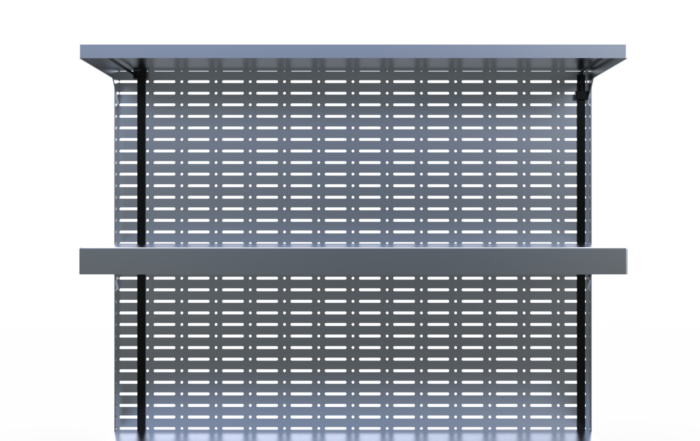What exactly is the term “full spectrum” LED grow light?
A full-spectrum LED grow light is nothing more than a marketing word that suggests that the light emitted by your grow light is very similar to the light emitted by the sun. This marketing term originates from the concept of “full-spectrum light,” which in recent years has been used to refer to electromagnetic radiation ranging from ultraviolet to infrared wavebands. The “full-spectrum light” is where the “full-spectrum LED light” marketing term can be found.
A Brief Overview of the Development of Full-Spectrum LED Grow Lights
The full-spectrum LED grow light is the most recent development of a concept that was previously somewhat puzzling. When first coined, “full-spectrum light” referred to the sun as the sole source of full-spectrum light.
When horticulture lighting became widely available, businesses once more started using the word in their marketing. This time, though, they claimed that full-spectrum LEDs might simulate the effects of sunshine on plant growth.
The phrase evolved to take on various connotations associated with sunlight as time progressed. The commercial lighting business started selling lights with a Color Rendering Index (CRI) of over 90 under the brand name “full-spectrum,” which is an abbreviation for “full spectrum.” Under light sources with a CRI of more than 90, humans can see colors more precisely, similar to how we see colors in the natural world when daylight is present. This feature was suitable for human situations such as offices, outdoor spaces, and other settings.
Comparison of Full Spectrum LED Grow Lights to Other Types of Grow Lights
At this point, it ought to be abundantly evident that there are no genuine standards for full-spectrum LED grow lights. The term “full-spectrum” is nothing more than a marketing gimmick for a straightforward concept.
Light spectrum can be utilized to your benefit, although you cannot replicate sunlight.
Fortunately, there are a lot of different grow lights on the market that have designs intended to achieve precisely that. Now that we’ve established that, let’s go over your alternatives so you can select the grow light that will work best for your crop.
Grow lights that use LEDs with a Narrow Spectrum
LED plant grows lights with a narrow spectrum and employs a higher proportion of narrow-band LEDs. The fact that these grow lights are designed for the blue and red PAR wavebands causes them to most frequently have a pink or purplish tint.
Since the early days of LEDs being used in horticulture, these particular kinds of pink grow lights have been prevalent. Despite this, we should not consider them to be out of date in any way.
A narrow spectrum is usually desirable in conditions similar to those seen in greenhouses. The sun lights the entire electromagnetic spectrum; therefore, it is most efficient to direct your efforts toward photosynthesis-friendly wavelengths.
You will get more bang for your money in energy efficiency if you choose red diodes rather than other colors because red diodes have a higher efficiency rating than different colors.
Grow Lights that Utilize Broad-Spectrum LEDs
LED grow lights that produce a broad spectrum have a more significant proportion of broad-band LEDs. Even though there is no such thing as a white wavelength, these lights have a white look. Wavebands of blue, red, and green are combined to create the color white.
These grow lights do not claim to be able to simulate the sun. Still, they are designed to successfully substitute the sun to generate high yields and superior quality regardless of the environment.
Our broad spectrum has been supplemented with red and blue peaks to stimulate vital photosynthesis and plant structure. However, the green waveband has been emphasized because of its adaptability to every crop variety or cultivation setting.
Recommended for use in indoor settings, except for certain exceptional circumstances in which narrow-band lighting is favored.
Spectrum LED Grow Lights That Are Adjustable
These cutting-edge LEDs grow lights enable precise regulation of the environment around your plants. It is possible to accelerate blooming times, improve your plant’s biochemistry, or adapt your plant’s structure to root better and be more readily handled by wirelessly adjusting the spectrum of the grow light. All of these effects can be achieved by changing your grow light.
You won’t be able to replicate the dynamic properties of sunshine with these forward-looking lights, but they come very close. When it comes to spectrum control, the possibilities are virtually unlimited. Developed for use in scientific or commercial applications that call for high precision.
post contents
Message Us
We’d love to hear about your project.
Get the latest news & updates
subscribe to our newsletter
recent posts
LUXX Light Technology Announces 2025–2026 Trade Show Exhibition Lineup
LUXX Editors2025-05-06T15:49:21+00:00May 6th, 2025|Lighting Tips|
The Best Shelf Electrification Tools for Retail Displays
LUXX Editors2025-05-10T22:12:55+00:00May 6th, 2025|Electrification, Grocery Lighting, Lighting Tips, Retail Lighting|
5 Reasons Why Grocery Retailers are Choosing LED Lighting
LUXX Editors2024-11-15T19:14:27+00:00November 15th, 2024|Lighting Tips, Refrigeration Lighting, Retail Lighting|





